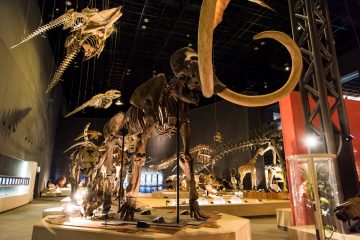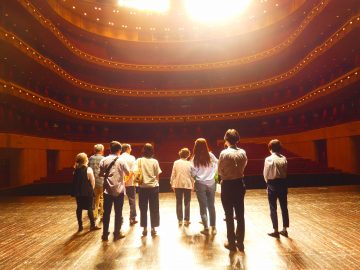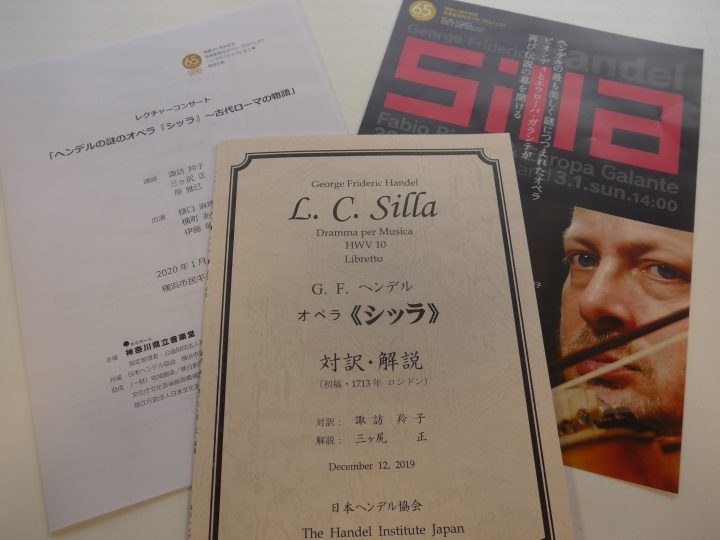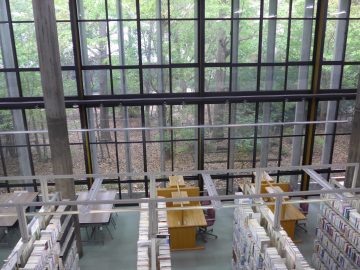Yokohama Paratriennale 2017: Interview with the Director on the Appeal and Highlights of the Paratriennale
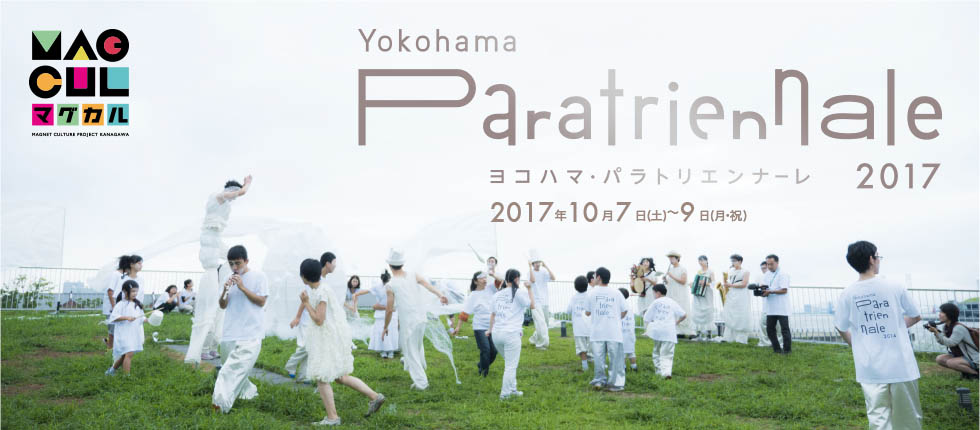
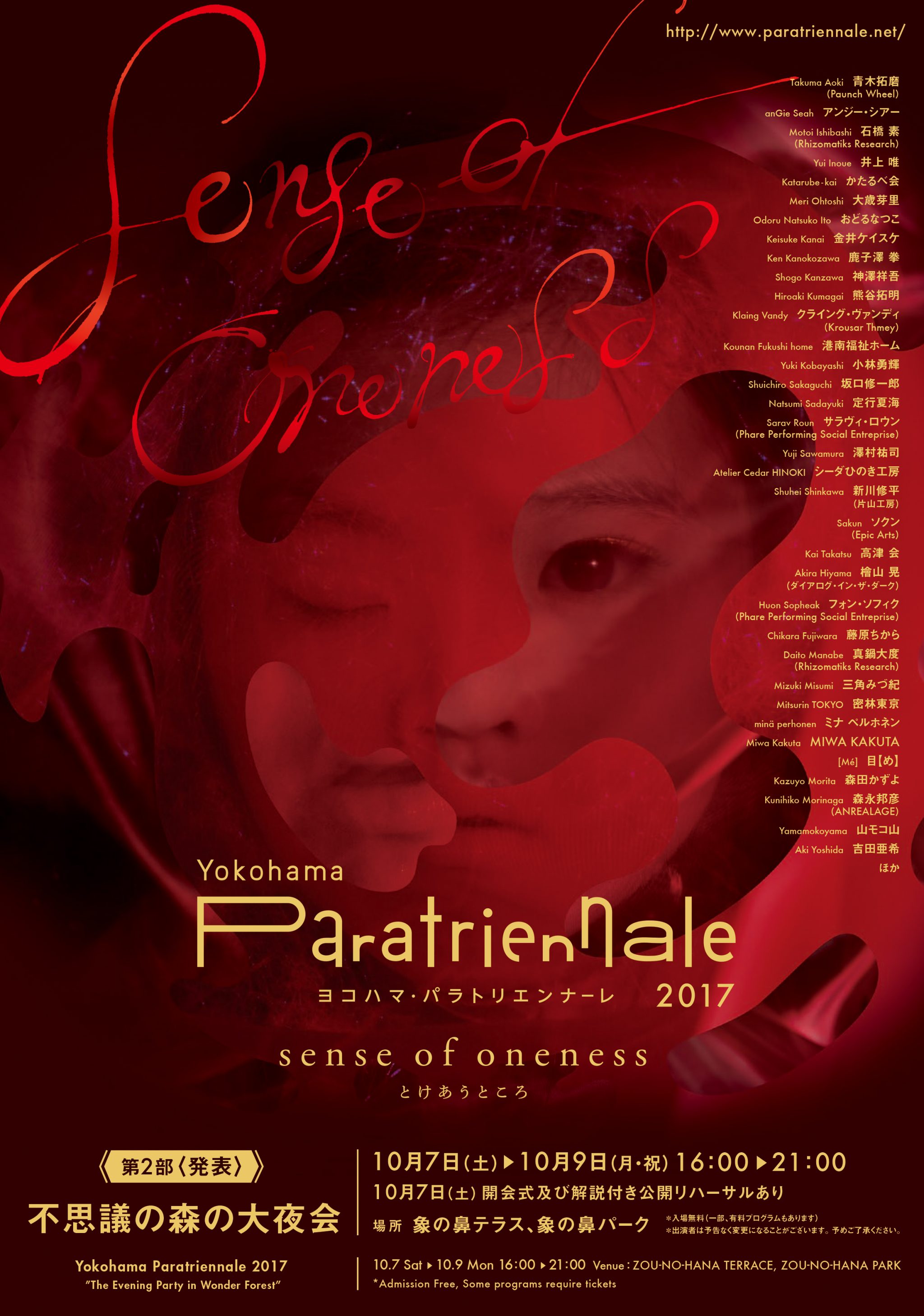
Important things to know when expressing yourself with people with disabilities
-This is the second Yokohama Paratriennale, and it's also your second Paratriennale.
Yes, I have been the director since the first event in 2014, and this will be my second time.
The Paratriennale is an evolving project, so research and projects will continue after this one closes, with the next, third one scheduled to be held in 2020, the year of the Tokyo Olympic and Paralympic Games.
-What led you to become a director, Kurisu-san?
Originally, I worked to create new value by connecting the different talents of people with various specialties and by connecting specialties with regions.
In 2011 I fell ill and my right leg was damaged, which meant my work and life were completely upended. It was during this time that someone asked me to do something for them: connecting people with disabilities with artists.
My own values have changed significantly by interacting with the diverse people I meet through my work and learning about the different charms of each individual. I now have a strong desire to live in a society where people can understand each other as people with different characteristics, regardless of whether they have a disability or not, and combine our differences to create new things.
-What was your experience like at the first Paratriennale?
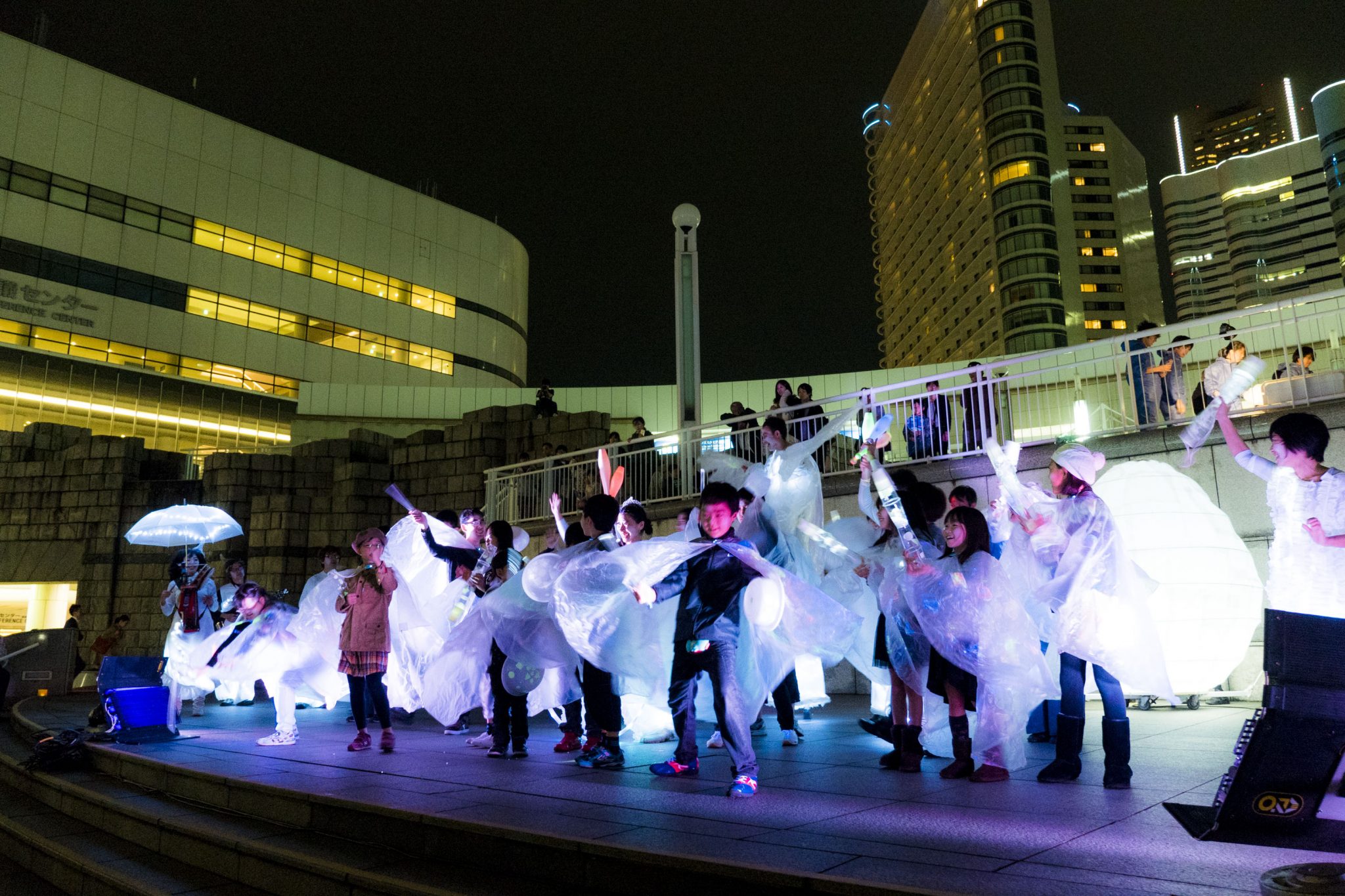
(1st Yokohama Paratriennale)
Looking back, I think the first Paratriennale was an event to "identify walls and barriers."
I realized how difficult it is for people with disabilities to take part in artistic activities in front of a large number of people.
- What were the walls and barriers like?
In one word, it's "accessibility." It's the difficulty of simply participating.
First of all, it was difficult to communicate the holding of the workshop and its contents to people with disabilities. Information does not reach people through flyers, emails, or social media. Even if we were able to deliver the information by visiting welfare facilities for people with disabilities in person and people actually wanted to participate, there were physical barriers such as transportation to the venue and steps. In addition to that, there were psychological barriers such as anxiety about mixing with people without disabilities and hesitation that they might not be able to do it.
Although we started the event with the ideal of presenting high-quality artistic expression that could be accepted worldwide, we realized that it was difficult for people with disabilities to even participate, and that we could not move forward unless this issue was resolved.
"Access Coordinator" and "Accompanist"
To solve this problem, in the two years since the first event, we have been working on various initiatives to remove barriers, including creating and nurturing the personnel known as "access coordinators" and "accompanists."
An "access coordinator" is someone who listens to the concerns of people with disabilities and removes the barriers that keep them from getting on stage. The first access coordinator was a qualified nurse with knowledge of both disabilities and performing arts.
An "accompanist" is a dancer or performer who goes on stage with a person with a disability and supports the performance, acting as an accompanist, so to speak. As creators, we work together with the person to find ways to overcome the physical and psychological difficulties that arise during the creation of a piece.
Together with them, we have been researching how we can help people with disabilities to feel comfortable creating, and have been putting this into practice repeatedly to get to where we are today.
-I heard that you served as a stage advisor for the flag handover ceremony at the 2016 Rio Paralympics. Did the "access coordinators" and "accompanists" also play an active role at Rio?
Yes, that's right. Do you remember the performance by people with disabilities at the handover ceremony? For that eight-minute performance, an access coordinator accompanied them and an accompanist went on stage with them to support their performance. The team with that experience is working with us again this time to carry out the activities of the Paratriennale.
-So the "Paratriennale" includes the period of creating an environment for creativity and trial and error.
Yes, that's right. The Paratriennale is divided into three periods, the first "creation" period started in May of this year, and the second "presentation" period will be the "Grand Night Party" from October 7th to 9th. Several teams are currently working on production and preparations for the presentation day.
For example, the white net is a piece called "Whitescaper" and will be used at the venue on the day.
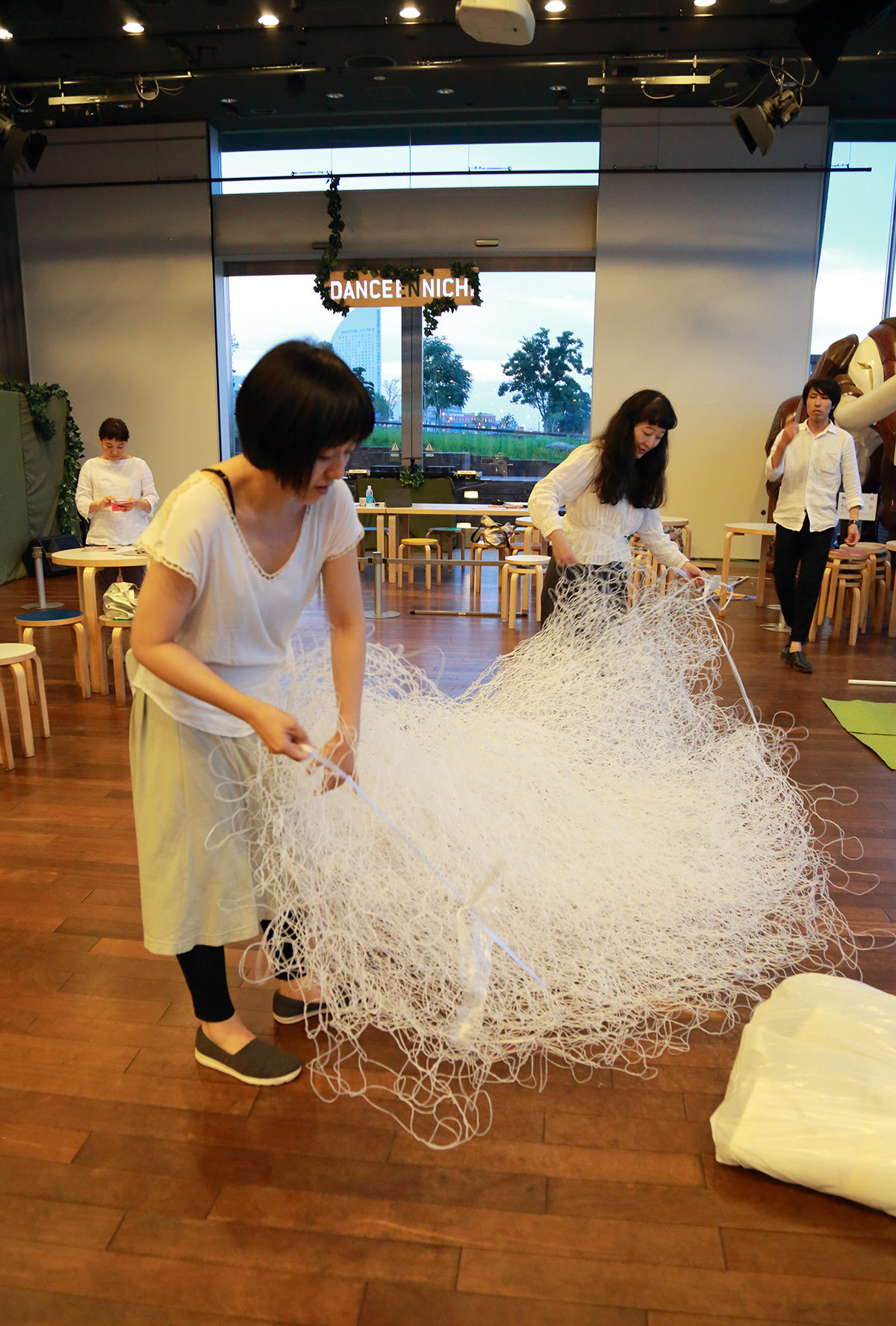
These are art pieces made by hand weaving special threads, and people of all ages, from children to adults, take part in their creation.
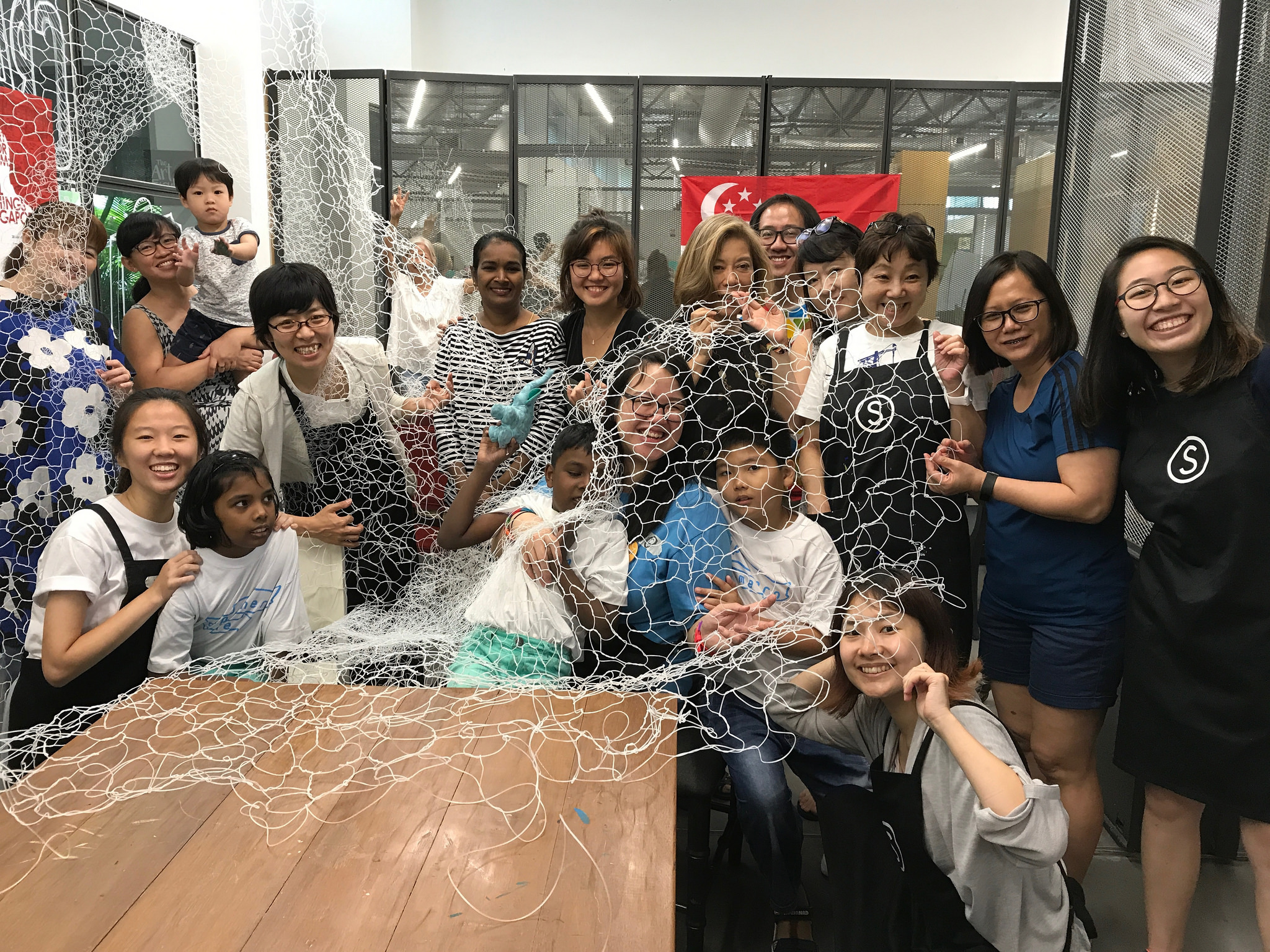
In July and August, we also held production workshops in Singapore, Cambodia, and Indonesia.
In addition to this, artists, experts, and people with and without disabilities have come together to hold a number of workshops and create works. I believe that each and every experience of the participants is a fruit of the Paratriennale.
"The Mysterious Forest Grand Soiree"
-What kind of project is the Mysterious Forest Grand Soiree coming up next month?
For three days from October 7th to 9th, a "Mysterious Forest" created by artists and 10,000 local residents will appear at Zou-no-hana Terrace and Zou-no-hana Park, and a "Grand Night Party" will be held featuring performance art and food.
Every element of this special three-day event is brought to life through collaboration between people with disabilities and professionals from a variety of fields.
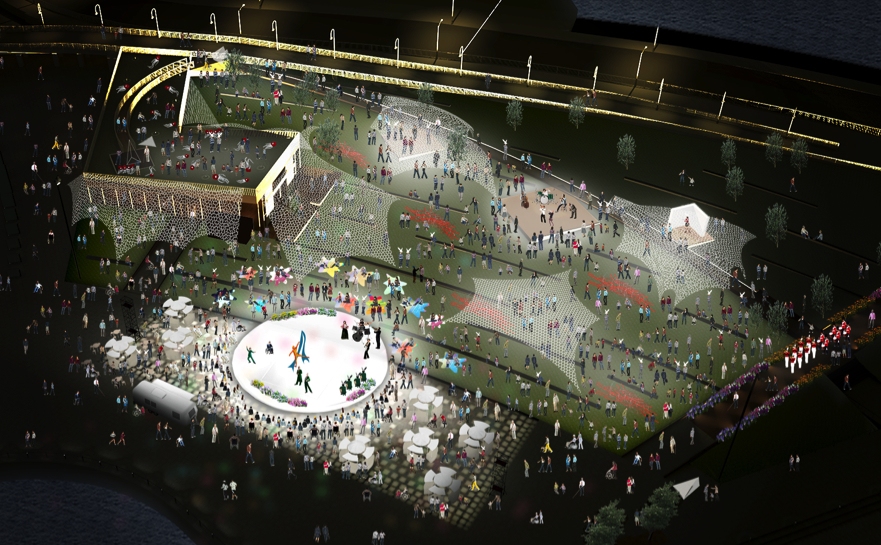
(Conceptual image of the venue)
The venue is divided into several stages.
At the center of the performance stage is a plate-shaped stage. It will be a gathering place for powerful performances by people with disabilities and artists from all over Japan and overseas.
For example, there was a dance performance created in collaboration with a Cambodian artist with a disability by contemporary dancer Otoshi Meri, a street dance by high school students attending a school for the blind, and an aerial performance by dancers with disabilities. A variety of different performances were presented one after the other like a full course dinner.
Over the two years from 2015 to 2016, we held repeated workshops and presentations, and worked steadily with artists and performers who shared the project's aims, and we feel that we have finally reached a point where we can create a work that we can say is of this level.
I would love for as many people as possible to see it.
On the Art Stage, professionals from a variety of fields will create contemporary art pieces using the five senses and sensibilities of people with disabilities.
I too am looking forward to seeing what kind of works will be produced from the encounter between senses and technology, such as clothing that expresses the invisible world and jewelry created through dialogue with a blind koto performer.
The food stage will feature food stalls created by the food design team Yamamokoyama in collaboration with welfare facilities in Yokohama, where you can enjoy meals. At the pizza shop, musician Takuma Aoki will also be performing.
-The Paratriennale is full of things to see, so how should people participate to fully enjoy it?
Admission to the venue is free, and you can also watch the performances on stage for free. We will also have workshops that you can join on the day, so you can enjoy yourself even if you just drop by.
However, if you want to fully enjoy yourself, we recommend the "Full Course" tour.
The journey to the forest begins with a guided boat ride from Minato Mirai. After viewing the art stage with the rabbit as your guide, you will experience the show from a special seat on the plate-shaped main stage. In fact, the "full course" has a special twist that only participants can experience.
The program will be held for two days, October 8th (Sunday) and October 9th (Monday, national holiday), from 15:30 and 18:00 on each day, for a total of four sessions. People with disabilities are welcome to participate. There is a limited number of participants, so please make a reservation before participating.
—Finally, a message to everyone
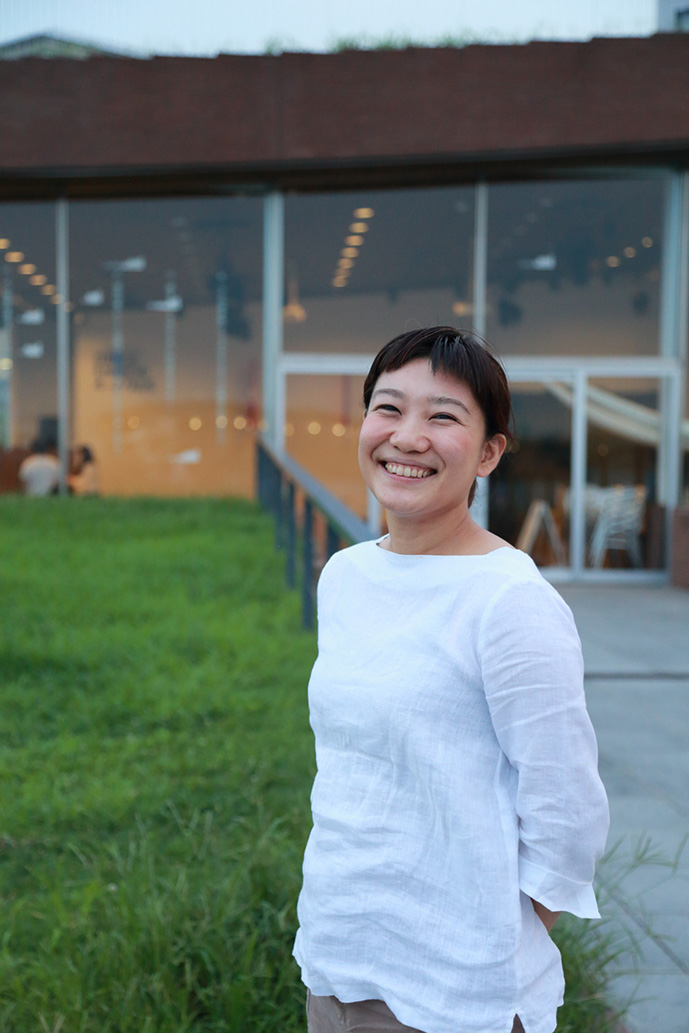
I believe that the Yokohama Paratriennale is not a passing event, but a movement that will create a world of new values.
I want to create a world where people can feel the difficulties others face and seek to understand each other, rather than a world where people compare themselves to others, discriminate against others, and separate themselves from others in the belief that only their own well-being is enough.
With this wish in mind, we have chosen the theme "A place where 'sense of oneness' comes together."
I find the idea of "experience" very appealing. Experiences stay with people and change them. So I hope that everyone will get involved in the Paratriennale in some way.
I believe that by visiting, you will discover something that you take for granted and have it turned upside down.
Please come and see the exhibition whether you are interested in the topic of welfare for people with disabilities or not.
And if you feel something, I hope you will take the next step.
I look forward to seeing you in the Mysterious Forest.
■ Overview of the "Mysterious Forest Grand Night Party"
Date and Time:
Saturday, October 7th 18:00~21:00 (open rehearsal)
October 8th (Sunday) and 9th (Monday/Holiday) 16:00~21:00
Venue: Zo-no-hana Terrace, Zo-no-hana Park
Price: Free admission
■ Tour-type performance: "Mysterious Forest Grand Night Party" full course
Date and time: October 8th (Sunday) and 9th (Monday/holiday) 15:30~17:30, 18:00~20:00
Price: ¥3,500 (¥5,000 for a pair ticket with one caregiver) The boat on October 9th is wheelchair accessible. Reservations are required.
For more details please visit our website.
http://www.paratriennale.net/
